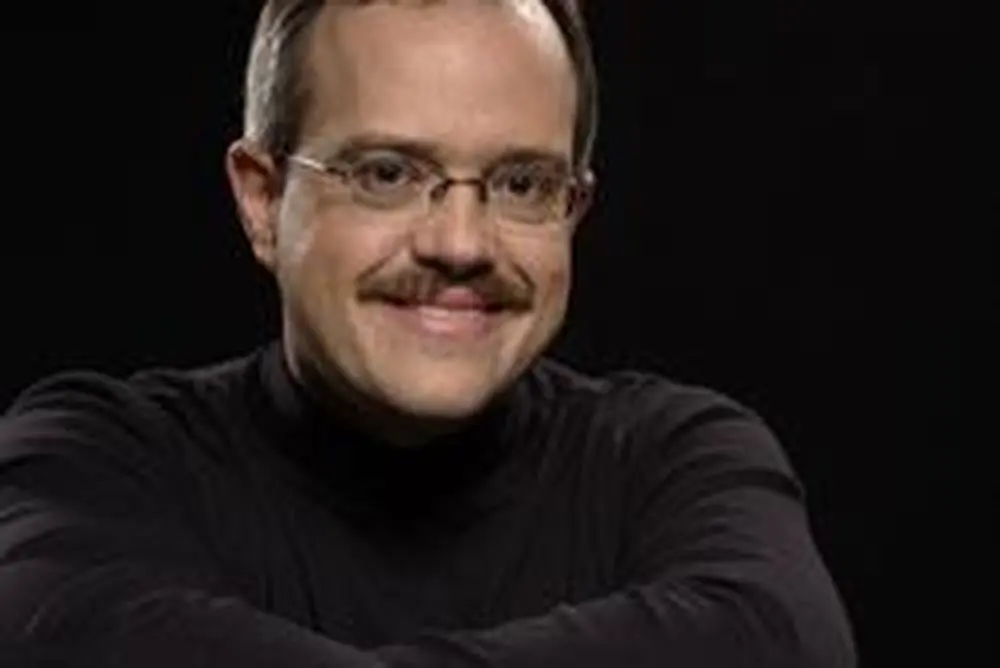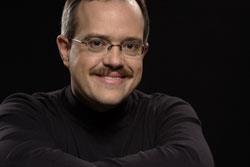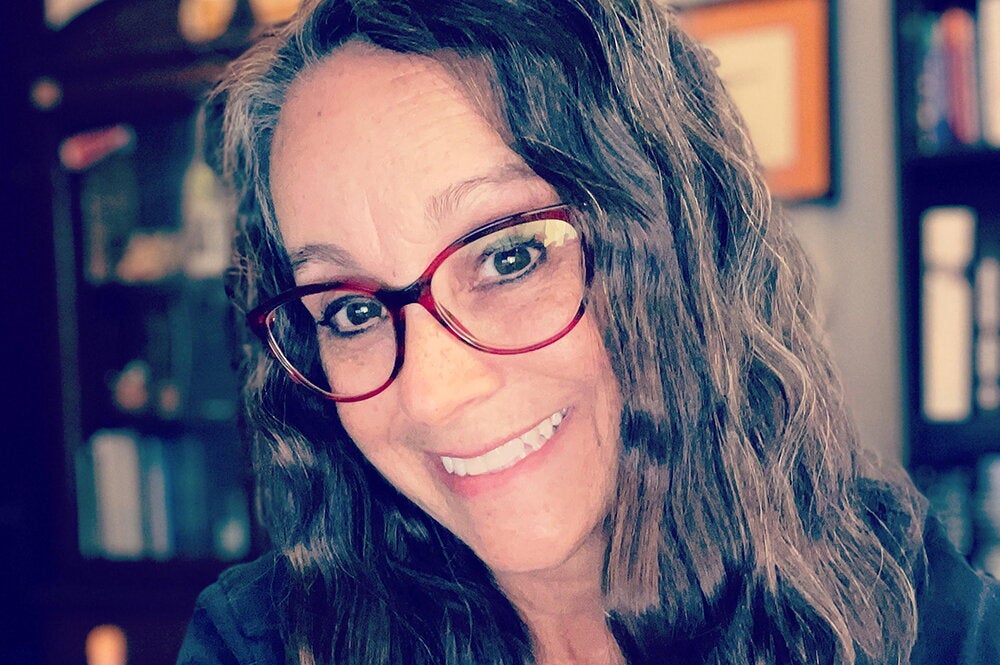

When Pat Jeffries goes to the movies, he can drive people crazy, whispering comments about the film as it plays out on the big screen. However, he's usually not commenting on the plot or the characters. Jeffries is whispering about the color tones.
This habit should come as no surprise, for Jeffries was one of the key people who developed the latest line of the world's most popular motion picture film. What's more, this 1992 LAS chemistry graduate was one of four Kodak contributors who were in Los Angeles on February 9 to pick up a Scientific and Technical Academy Award of Merit for developing the Vision2 line of motion picture films.
Four people were named in the Academy Award, but Jeffries points out that creating Kodak's Vision2 film was a team effort involving more than a hundred people. Vision2 films, available since 2002, set a whole new level for image quality, he explains. The colors are richer and more natural, and you can see deeper into the shadows.
Much of the secret lies in the silver halide crystals—the elements of the film that capture light. Jeffries' job was to boost the efficiency of the silver halide crystals by manipulating what happens when the light strikes them.
"As you improve the efficiency of those crystals, you can make them smaller," he says. "And as you make the crystals smaller, you can make the image cleaner."
However, only half of Jeffries' job is in the lab. He has also led commercialization teams, a job that brings him into contact with some of the world's best cinematographers. Among the cinematographers with whom he has worked are Allen Daviau, who shot such movies as E.T.: The Extra-Terrestrial and The Color Purple. Jeffries has also worked with John Toll, the two-time Oscar winner for Braveheart and Legends of the Fall.
These and other cinematographers often agree to test new motion picture films for Kodak, sometimes on the set. For instance, the set of the Garfield movie, which mixed live action and animation, was used to test how a new film worked with special effects. As it turns out, the Vision2 films are especially good with special-effect movies in which the actors perform in front of a green screen.
"In the lab, background images replace the green screen. So a computer has to decide where the green screen ends and the actor begins," Jeffries says. "We designed the film so the computer can best do that."
Jeffries joined Kodak immediately after receiving his PhD in chemistry from the U of I in 1992. He grew up in a small community just outside of Canton, Ohio, and originally had his eyes on dentistry before he fell in love with chemistry during his undergrad years. At the U of I, Jeffries' first introduction to photography came in a ceramic engineering class where he shot and processed black and white photographs taken through microscopes.
At Kodak, he began work in the black and white lab, where he primarily focused on X-ray films for mammography. Then, after five years, Jeffries shifted to motion picture film, where Kodak's original Vision line of film dominated. Eventually, the Vision2 film, which is actually a family of seven film types, replaced the original Vision line.
As Jeffries notes, they need to continually improve motion picture film to stay ahead of what they call "the Digital Monster." Digital has replaced much of the film used in home cameras; but for now, the motion picture industry still relies on film because of the higher quality necessary when images are blown up to theater size.
The bottom line, however, is that Jeffries loves film because of the opportunities it gives to chemists like him.
"Photographic film is easily the most complicated chemical system that has ever been made," he says. "From a chemist's point of view, it's a real treat to work on a system that is so rich."


